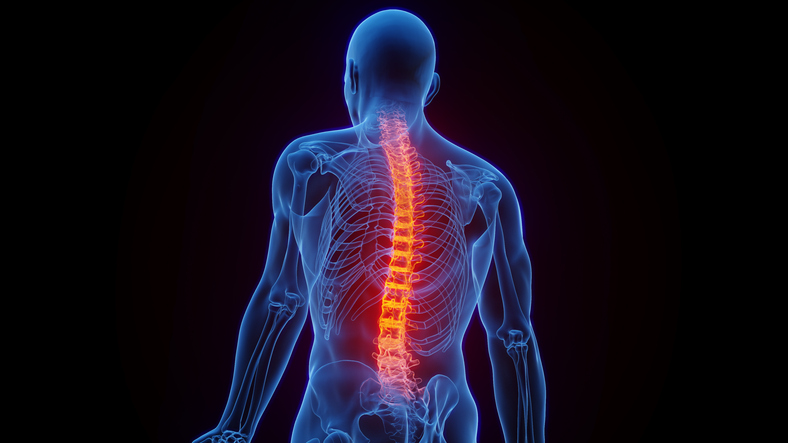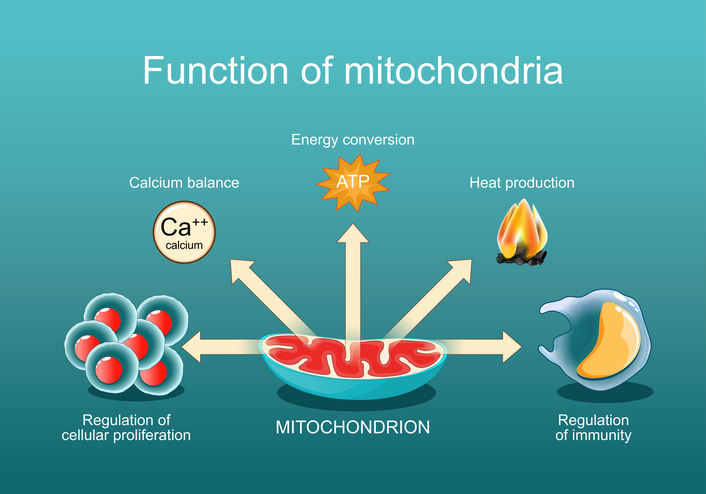Red Light Therapy May Have Your Back, Literally!

By Joy Stephenson-Laws, JD, Founder
The more I research light therapy, the more I am convinced that this form of therapy is practically a way for us to become superhuman. If you are new here, light therapy, also called phototherapy or bright light therapy, is a treatment in which skin is exposed to ultraviolet (UV) lights. Before you start thinking this has to increase the chance of getting skin cancer, know that light therapy is not the same as standing in the sun without wearing sunscreen for hours or laying in a tanning bed. Light therapy has the ability to deliver wavelengths we get from sunlight without the harmful UV rays.
I came across a recent article about how researchers found promising evidence suggesting that spinal cord injury patients may benefit greatly from red light therapy. Red light therapy is a form of low-level laser (light) therapy (LLLT) and is offered in many medical or welness office settings. During a session, the light delivers wavelengths of natural red and near infrared light. It’s like the wavelengths you get from sunlight without, again, those harmful UV rays.
The researchers administered red light to cell models of spinal cord injury (SCI). The main objective was to deliver the light directly to the site of the injury. The results were pretty remarkable.
“They found that delivery of red light at a wavelength of 660 nm for one minute a day increased cell viability (a measurement of the number of live cells) by 45% over five days of treatment,” according to this Medical Xpress report that discusses the research.
Not only did red light treatment improve survival of nerve cells but it also promoted nerve cell growth. The research also showed that red light may be able to improve sensation and mobility after an SCI.
Red light therapy may improve life expectancy in those with SCI.
According to the World Health Organization (WHO), globally more than 15 million people are living with a spinal cord injury.
“Life expectancy in people with SCI strongly correlates with neurological impairment and preventable secondary conditions,” WHO reports.
Red light therapy in SCI appeared to significantly improve neurological impairment through repairing nerve connections. This means that red light therapy has the potential to extend life expectancy and improve quality of life in people with SCI.
The power of red light therapy mainly has to do with its impact on mitochondria. Almost every cell in our bodies has several thousand mitochondria. Also called the cell’s powerhouse, mitochondria make an energy in the body called (adenosine triphosphate) ATP. Optimizing ATP production is a great way to improve overall health in a number of ways, and red light therapy has shown that it can increase ATP production. (You can read more about red light and mitochondria here). It would make sense that improving the cell’s powerhouse would have neuroprotective and neuroregenerative effects, which is what the researchers witnessed with red light therapy and SCI.

The results were so encouraging that researchers are working to create a red light device that can actually be implanted in a patient with SCI.
"Surgery after spinal cord injury is common, but currently these operations are only aimed at stabilizing injuries to the bones of the spine that have been damaged by the trauma,” said Andrew Stevens, one of the authors of one of the studies, according to Medical Xpress.
“This concept is incredibly exciting as it could offer surgeons the opportunity during the same operation to implant a device which could help protect and repair the spinal cord itself."
It just goes to show us that there are so many resources available to us that have the potential to help us attain healthy and happy longevity.
You do not need to have an SCI to benefit from red light.I don’t care how young, fit, healthy or mobile you may be. The truth is that all of us could benefit from read light therapy.
(pH must-read - Yes, You Can Be Red Light Deficient).

Red light therapy is a regular part of my proactive healthcare routine. It has improved the health of my hair and skin and even drastically reduced joint pain I have experienced due to playing golf for more than three decades. There is even evidence suggesting that red light therapy may improve blood sugar levels and help with symptoms of multiple sclerosis.
If it's good enough for astronauts in space, it's good enough for me.
Red light therapy is so powerful and effective that NASA used it to keep astronauts healthy while in space. If red light can help people in the space environment, I suspect hat we could all benefit from it in normal everyday life. In fact, it is safe to receive red light therapy daily (of course, if following the proper precautions).
To learn more about red light therapy and book an appointment at Chilltonic in Encinitas, California for treatment, click here. I also highly recommend clicking here for a very comprehensive overview on the many ways red light therapy can benefit the body.
Finally, never underestimate the power of good nutrition when it comes to healing and preventative healthcare. It is always a good idea to maintain a nutrient-rich diet in order to decrease inflammation, promote wound healing and maintain strong bones and muscles (especially as we age). I highly recommend getting routine nutrient tests for the purpose of identifying any nutrient imbalances or deficiencies. Such nutritional issues may increase the risk of injury, delay healing and increase the likelihood of developing chronic illness. The good news is that once a deficiency or imbalance is discovered this can in most cases be addressed through dietary changes and taking quality supplements per the recommendation of a competent healthcare professional.
Enjoy your healthy life!
Disclaimer: This article is not intended to provide medical advice. Please consult with your doctor or another competent healthcare practitioner to get specific medical advice for your situation.
The pH professional health care team includes recognized experts from a variety of health care and related disciplines, including physicians, attorneys, nutritionists, nurses, and certified fitness instructors. This team also includes the members of the pH Medical Advisory Board, which constantly monitors all pH programs, products, and services. To learn more about the pH Medical Advisory Board, click here.



